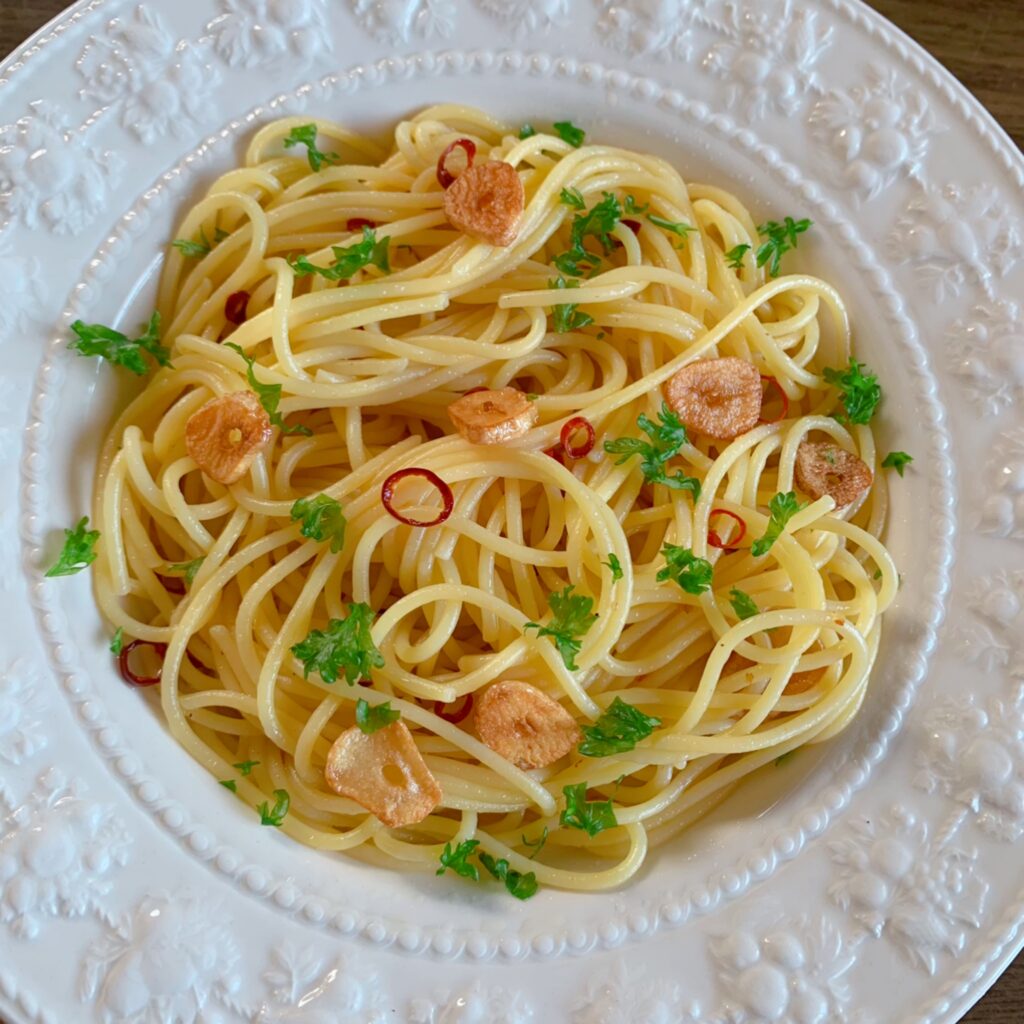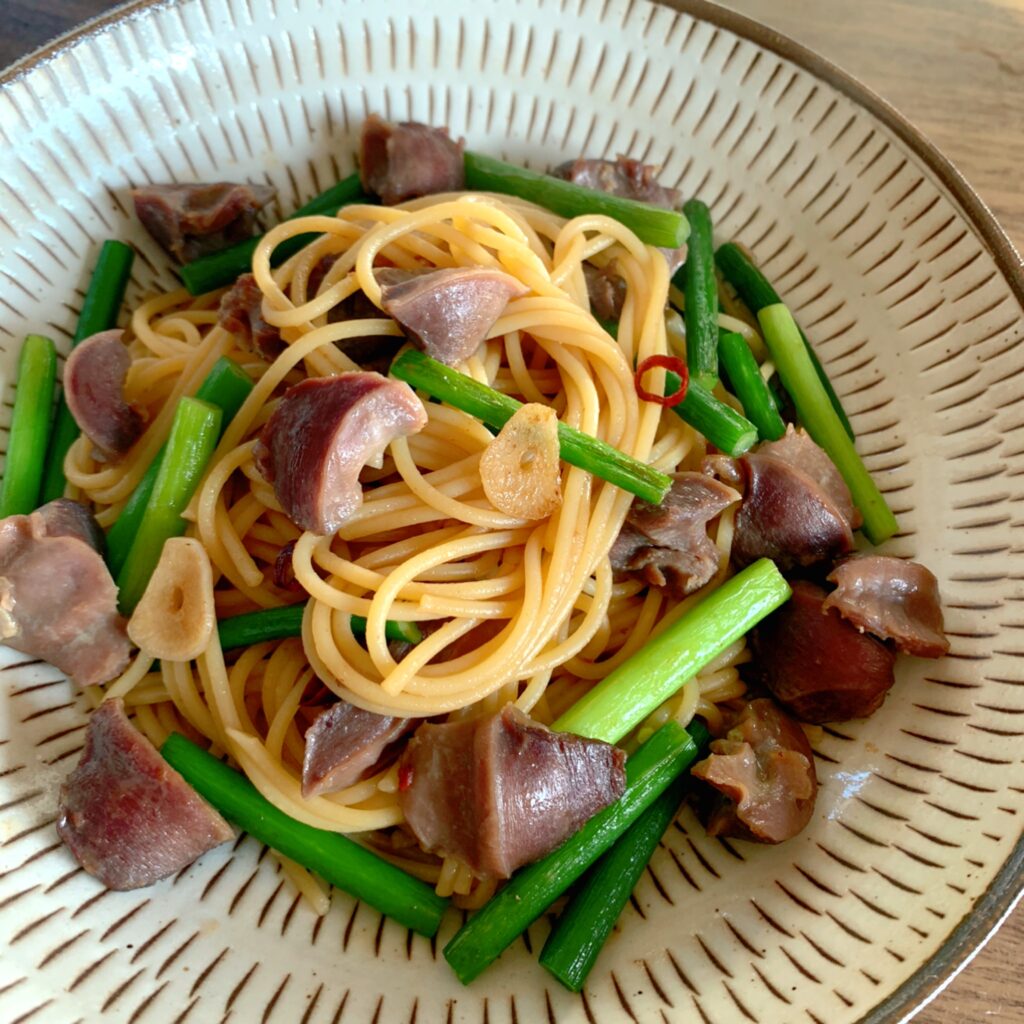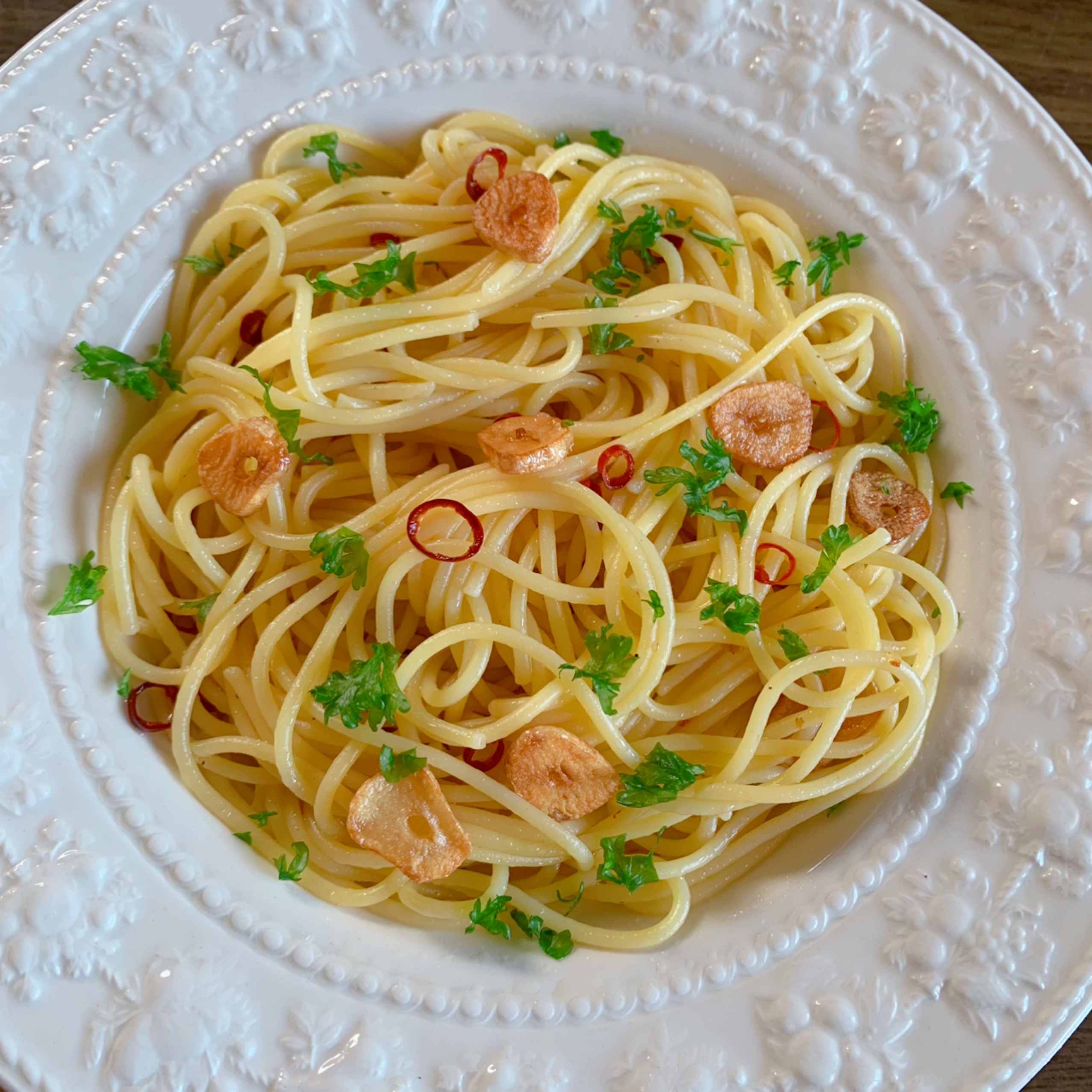
Spaghetti Aglio olio e peperoncino(スパゲティペペロンチーノ)
What kind of dish is Spaghetti Aglio olio e peperoncino??
Originally, peperoncino means “chili pepper” in Italian.
The original, official name of this dish is “aglio olio peperoncino,” with aglio meaning garlic, olio meaning oil, and peperoncino meaning chili pepper.
Because aglio olio peperoncino is difficult for Japanese people to remember and pronounce, the name peperoncino has become widely known.
Japanese-style peperoncino sometimes includes uniquely Japanese ingredients such as soy sauce and yuzu pepper.

This pasta dish, which requires few ingredients and can be made even by those in poverty, is sometimes called “pasta della dispertone” (the pasta of despair).
However, when you actually try to make it, it can easily turn out bland or oily, resulting in unexpected mistakes.
Key points for making perfect peperoncino
- Pay attention to the amount of salt and water.
- This is extremely important, considering how simple the dish is. Typically, when boiling pasta, 10g of salt is used per liter of water, but when making peperoncino, 17g is used.
- Emulsifying water and oil
- Emulsification is the process by which the cooking water and oil, which do not normally mix, mix together and turn into a thick sauce. The starch dissolved in the pasta water aids in emulsification. Using too much water for boiling will dilute the starch needed for emulsification.
- Cook the garlic and chili peppers slowly over low heat to prevent them from burning.
- Preheating the frying pan can make the garlic burn more easily, so add the olive oil and garlic to the pan before turning on the heat. First, heat over high heat, and once it starts to bubble, reduce the heat to low and make the fried garlic. Once the garlic has become crispy, remove it from the pan and place it on a plate. Place the chili pepper in the oil after it has cooled slightly. Dried sliced chili peppers burn easily, so use a whole pepper at this point. Finally, add a pinch of sliced dried chili peppers for garnish when mixing with the sauce.
By following these three steps, you’re guaranteed to make a delicious peperoncino. Give it a try!
NUTRITION FACTS : Spaghetti Aglio olio e peperoncino olio e peperoncino

- 508 Calories Protein 11.0 g Total Fat 25.7 g Total carbohydrates 62.0 g Sodium 7.6 g
INGREDIENTS : Spaghetti Aglio olio e peperoncino (1SERVINGS)
- Spaghetti (80g)
- Salt (25g)
- Water (1500g)
- Olive Oil (20g)
- Garlic (8g)
- Dried Chili Pepper (1 whole and a pinch of sliced chilies)
- Butter (5g)
For two servings, use 2000ml of water and 33g of salt.
How to make Spaghetti Aglio olio e peperoncinoio olio e peperoncino
- Cut the garlic in half, remove the core, and slice into 1mm thick slices.
- Place the garlic and olive oil in a small frying pan and heat over high heat. Tilt the pan so the garlic is completely submerged in the oil.
- When small bubbles start to appear from the garlic, reduce the heat to low and cook for 4 minutes.
- When the garlic is crisp and golden brown, remove to a plate.
- Turn off the heat, add the chili pepper, and leave to sit while you cook the spaghetti.
- Bring water to a boil in a deep pot and add salt and spaghetti.
- Boil for the recommended time for your spaghetti. I used 100g of spaghetti, which requires a 7-minute cooking time.
- Drain the cooked spaghetti in a colander.
- 3 minutes before the spaghetti is done cooking, add 50g of the spaghetti cooking water to the frying pan.
- Mix everything together. The heat should be off at this point.
- When the sauce becomes like a dressing, add another 50g of the cooking water and simmer over low heat.
- Add the butter and melt. Simmer for just under a minute.
- Turn off the heat, add the well-drained pasta and toss with the sauce.
- Return to low heat and continue heating the pasta. Be careful not to let the water and oil evaporate completely. (It’s best to have some oil remaining on the plate after eating.)



コメント